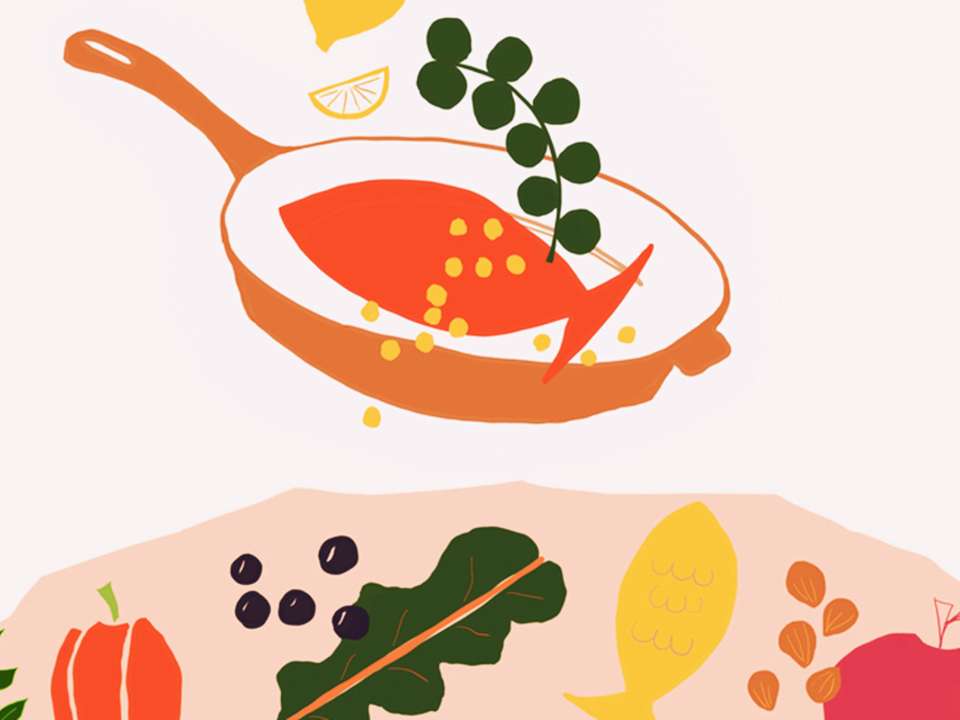
Here’s a heartbreaking fact: Every year, about 610,000 people die from heart disease in the United States. That’s a quarter of all deaths, making cardiovascular disease the leading cause of mortality in the country.
While those statistics are certainly sobering, don’t lose heart. Practicing healthy lifestyle habits can go a long way in keeping your ticker in top shape.
In addition to exercising on a regular basis, reducing your stress and limiting your alcohol intake, choosing nutrient-rich foods over less healthy ones has a significant impact on your cardiovascular health.
Don’t believe it?
Researchers behind a recent study found that unhealthy dietary habits were responsible for nearly half of deaths related to heart disease, type 2 diabetes and stroke.
“What we eat and how we eat absolutely can be good or bad for us,” says Anne Linge, R.D.N., C.D., C.D.E., a dietitian and diabetes educator at University of Washington Medical Center-Roosevelt.
Whether you’re looking to lower your cholesterol or simply want to work on your wellness, Linge has some practical tips for eating your way to a healthier heart.
Limit added sugars and refined carbs
Sugar probably isn’t the first culprit that comes to mind when you think of heart disease, but the sweet stuff is actually a huge detriment to heart health.
In a 2014 study, participants whose calorie intake consisted of 17 to 24 percent added sugar had a 38 percent higher risk of dying from cardiovascular disease than those who consumed only 8 percent added sugar.
“Eating a lot of sugar is definitely correlated with development of poor health in general,” Linge says. “But these foods that are high in added sugar can also cause inflammation, which is something that damages the cardiovascular system. When we get damage, the liver produces cholesterol to patch that damage. That cholesterol patch is called plaque, and it can break free and cause a heart attack or stroke.”
Keep in mind, though, that not all sugars are created equal.
There’s a difference between the naturally occurring sugar you might find in, say, a banana and the added sugars you get from eating a candy bar, drinking a can of soda or noshing on cookies and other carbs that contain added sugar.
“Processed sugars don’t have any nutritional content,” Linge explains.
In other words, added sugars are empty calories that deliver a double whammy. Not only do they contribute to weight gain, which may factor into the development of diabetes and high blood pressure, but they also make you less likely to fill up on nutrient-rich alternatives.
Linge suggests focusing on whole grains rather than processed carbohydrates and opting for foods with naturally occurring sugars instead of sweetened ones.
Eat your vegetables — and fruits and legumes, too
OK, this one probably doesn’t come as much of a surprise.
Fruits, vegetables and legumes — things like beans, lentils and chickpeas — are good for you.
Not only do those luscious leafy greens and cheerful cherry tomatoes deliver plenty of nutrients, they also do it without the saturated fat, extra sodium and added sugars that you might get from processed foods.
As an added benefit, certain fruits and veggies like Brussels sprouts, collard greens, root vegetables, apples and pears also pack in a good amount of soluble fiber, which helps the body break down cholesterol.
To boost your veggie intake, Linge suggests sticking to this food formula at every meal: Fill half your plate with vegetables, a quarter with starch and a quarter with lean protein.
But don’t think that you’re limited to just the fresh stuff. Frozen, canned and precut vegetables and legumes are perfectly good alternatives, Linge notes, especially for those on a tight budget or with busy schedules.
“I encourage people to go through the grocery store and look for possibilities,” she says.
Bagged and washed salads are an easy way to cut down on prep time, while baby carrots, pea pods and bananas make for convenient grab-and-go snacks.
You can toss a handful of frozen peas into a basic rice or pasta dish, or even stir various veggies into a soup. Canned beans and lentils can also help cut down on your cooking time and are a great way to fit in some protein and fiber.
“If the vegetable has been washed and prepped so you can just grab it when you need it, that makes it really quick to put vegetables on the plate,” Linge says.
Choose real food over processed food
Less artificial sugars and refined carbs? More vegetables, fruits and legumes? If you’re sensing a trend away from highly processed foods, you’re right.
“Our diet has changed a lot over the decades, and people have moved to eating a lot more sugar and processed foods,” Linge says. “We need to get back to a plate of real food.”
What does that mean exactly?
Linge suggests avoiding things that have been laden with added sugar, sodium and partially-hydrogenated fat. That means deep-fried foods, sugary beverages and many packaged snacks and meals.
It’s not necessarily about cutting all sugar, salt or fat from your diet, but rather about choosing nutrient-dense foods that don’t have a ton of unhealthy stuff added in.
Think about it this way: A baked potato, French fries and flavored potato chips are all different versions of the same vegetable. But two of the three have been fried and pumped with ingredients that aren’t typically used in cooking.
Guess which ones aren’t so good for you?
Understand good fat versus bad fat
Remember how all sugar is not created equal? The same goes for fat, especially when it comes to things like cholesterol.
Your body actually needs fat to support cell growth and provide energy, but it can be difficult to know which ones are good for you and which are bad.
There are three general categories of fat: polyunsaturated, monounsaturated and saturated.
The first two types are considered healthy and can lower your level of bad cholesterol. These fats are found in foods and ingredients like olive oil, fish, avocados and nuts.
In the bad camp are some saturated fats called trans fats, which can raise your level of harmful cholesterol and are widely linked to heart disease. Fortunately, trans fats were banned by the Food and Drug Administration in 2015 and have been mostly eliminated from grocery store shelves.
That leaves other saturated fats, found in cheese, butter, red meats and many whole-fat dairy products. Saturated fats as a whole used to be firmly on the bad side of things, but recent research suggests otherwise.
One analysis of 21 different studies found that saturated fats aren’t associated with an increased risk of cardiovascular disease, stroke or coronary heart disease after all.
“It’s becoming a muddy issue,” Linge says. “Having a little bit of saturated fat in the diet can be beneficial, but there’s still a lot of controversy.”
In the end, she suggests incorporating more of the good-for-you fats into your diet and adding saturated fats in moderation.
Ditch red meat for fish and poultry
With all this talk about good fats, fruits and veggies, you might be wondering where meat fits into the picture.
Mainly, can you have your bacon and a healthy heart, too? Sort of.
According to Linge, it’s best to focus on lean protein like fish and poultry for everyday meals and eat red meats less often.
That’s because a diet laden with red meat can raise your risk of heart disease and negatively affect your kidney function.
Widely acknowledged heart-healthy diets like the Mediterranean diet and the National Heart, Lung and Blood Institute’s DASH eating plan agree. Both emphasize plant-based foods accented with fish and lean white meat.
If you’re not willing to drop all red meat from your diet completely cold bacon — er, turkey — Linge suggests going vegetarian a couple of days a week instead. (Just another reason to give #MeatlessMonday a try.)
After all, incorporating heart-healthy eating habits you’ll actually practice on the daily is what matters most.
“It’s all part of finding balance,” Linge says.
Now that’s something you can take to heart.

 Healthy ideas for your inbox
Healthy ideas for your inbox





